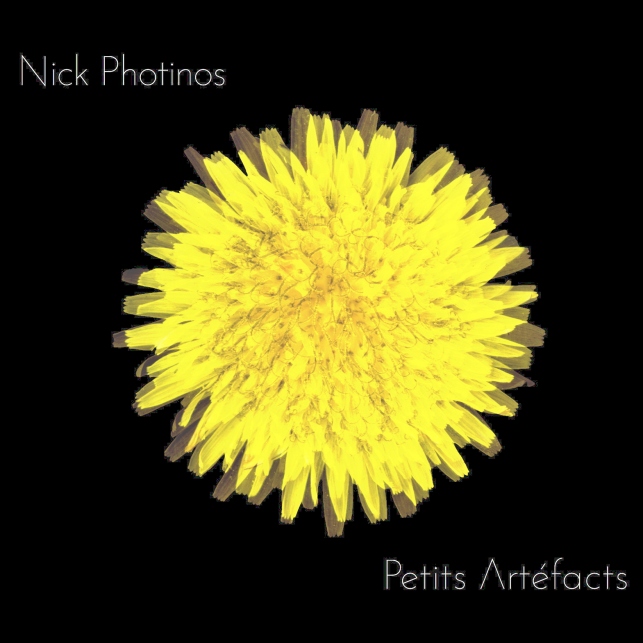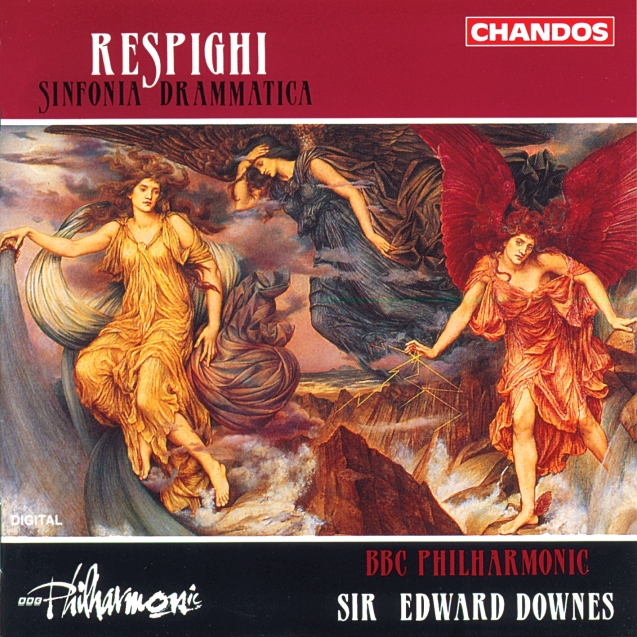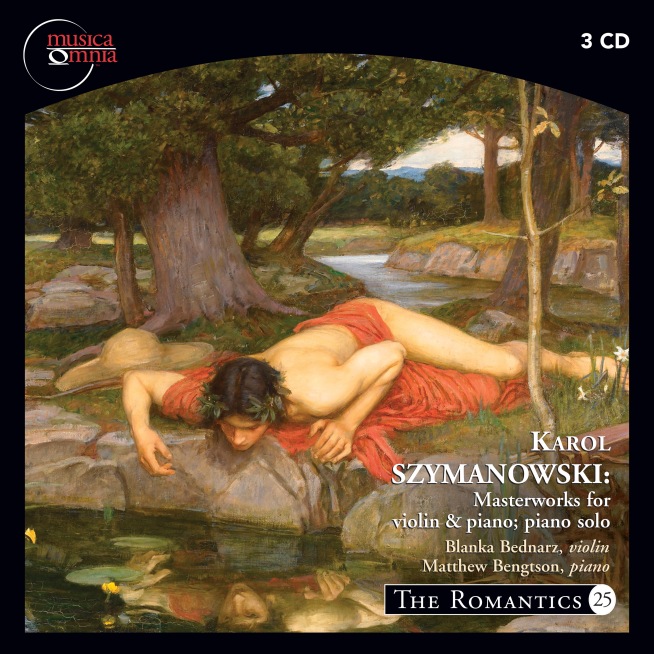
GHYS: Petits Artéfacts. D. LANG: undanceable.* stuttered chant.+ MOLLY JOYCE: Sit and Dance. LITTLE: and the sky was still there. DESSNER: Lewisburg. LE BOEUF: Alpha.+ NORMAN: Sonnets.* NEGRÓN: Panorama / Nick Photinos, cellist; *Vicki Ray, pianist; +Doug Perkins, percussion / New Amsterdam NWAM090
This CD of new music played by eighth blackbird founder Nick Photinos is clearly challenging but also quite engaging. It’s always a bit difficult to review new music without any liner notes, but when you have to work from mp3 downloads and not physical discs that is often the risk you take. For instance, there is no acoustic instrument listed for the six tracks that make up Florent Ghys’ Petit Artéfacts, yet there is clearly another instrument that sounds like a keyboard playing behind cellist Photinos. Who knows? New Amsterdam Records sent me a facsimile of the booklet three days after I contacted them (and two days after reviewing the CD), so I was finally able to put at least some of the pieces together in my mind.
All I had to help me while listening to was this blurb from the HB Direct website, which is selling the CD, an extended quote from the artist:
The idea for this recording began to take shape after a concert at the Bang on a Can Summer Music Festival, an annual festival of new chamber music held every year in North Adams, MA and run by Bang on a Can where I have taught for a number of years. In 2015, I premiered a work by bassist Florent Ghys, whose own recent and amazing Télévision inspired me to reach out to him. The piece he wrote for me: Petits Artéfacts, for cello, electronics and video, got me thinking about all the great yet small (sub 10-minutes) pieces I’ve performed over the years, most of which had never been recorded. These are works by some of the most acclaimed names in new music – David Lang, Andrew Norman, Bryce Dessner, David T. Little – but also a newer generation of groundbreaking composers like Angelica Negron, Florent Ghys, Molly Joyce, and Pascal Le Boeuf, who are quickly gaining notoriety for themselves. The music runs the gamut from quirky and hilarious to profound and ethereal, and is brought to life with the help of two of my favorite collaborators, pianist Vicki Ray and percussionist Doug Perkins. Doug is also serving as Producer on this effort, with Todd Reynolds as co-producer.
Well, I haven’t heard Ghys’ Télévision, and for the most part I flee from Bang on a Can recordings, but as it turns out Ghys’ composition Petits Artéfacts is fascinating, placing cellist Photinos in an atmosphere that includes pre-recorded synthesizers, percussion and a woman’s speaking/singing voice. The six movements of the suite, titled Game, Information, Cuisine, Factory, Family and Flowers, have their own unique and personal character. Ghys uses folk music and pop rhythms, but mercifully no rock crap. In Information, the speaking voice appears to be talking in a Latin tongue, but careful listening reveals it as gibberish (or Esperanto, I’m not sure which), because none of the words actually make any sense. It’s all just for fun, with the cello playing music of a specific rhythm and the speaker matching him note for note and pause for pause. Weird though this sounds, it creates a charming effect, probably because it’s sort of in a tarantella rhythm.
Cuisine features a sort of lightly burbling sound in the background, to my ears rather like percolating coffee. Photinos plays his cello on the edge of the strings, and much of it in an echo chamber-type acoustic. Factory begins quietly and wistfully, with the cello playing a dolorous, broken melody. He gradually increases the volume but never goes further, and there are no extraneous sounds on this one. There is, however, a combination of an electronic whistle and a sort of static-cling crackle in the background of Family, which largely consists of Photinos playing bowed half notes that keep going lower and lower in pitch against that backdrop. Strange indeed! Flowers, the closer, features the cello playing a syncopated pizzicato figure—probably pre-recorded—joined by the same artist playing an edgier, backbeat tune in the upper range over this. A third cello “voice” enters, playing portamento slides, and then a fourth voice filling in.
After receiving the booklet, I learned that Ghys wrote Game as a tribute to the old computer game of Pong, and both Cuisine and Family “explore the computer as an extension of the cello by repeating micro audio fragments.” Wow, I would have never guessed that on my own! Moreover, in Factory “the computer acts as the brain by generating melodic instructions for the cellist to execute” while in Flowers “the computer layers multiple versions of the cellist one by one, resulting in a mounting kaleidoscopic garden of sound.” Fortunately, the music is good enough to overcome these little head games.
David Lang’s undanceable is made so by the juxtaposition of a slow 3/4 played by a synthesized piano in the bass range while the cellist plays apposite plucked figures above. It suggests a fugue but never quite arrives there. Stravinsky and Dave Brubeck would really enjoy this one. Molly Joyce’s Sit and Dance would seem to imply that you could dance to the music, but once again the irregular beat and contrasting rhythms played by cellist and pre-recorded synthesizer defeat the purpose. She explains in the notes that she wanted to write a piece that somehow had a ground bass line from the 17th century included. An impassioned outburst by the soloist in the middle provides a dramatic change of mood. Lang then makes a reappearance with stuttered chant, played by the cello against a repeated and irregular knocking sound (almost like woodblocks), with both the soloists and pre-recorded sound matching each other perfectly in rhythm.
This is followed by David T. Little’s and the sky was still there, played by soft staccato chords on a synthesizer while a pre-recorded woman’s voice tells a story (over a telephone line) about getting through military initial processing at Charlottesville, North Carolina, standing in line “for the sheer joy of standing in line” with “very little talking, no movement.” This one indulges in a fairly heavy rock beat, and the music is total crap. I hated it. I skipped through it.
Bryce Dessner’s Lewisburg is a surly, aggressive piece, played in the cello’s lower range with very edgy bowing. Dessner tells us that he wrote the piece, which explores a tradition of “recounting violence through folk songs,” as an extension of his Murder Ballads written for eighth blackbird. Ominous fast figures come and go, some of them moving up the range and becoming even more aggressive. This also had a bit of a rock beat. I wish these modern-day composers would just get away from this rock shit. It’s not appealing to a mind cultivated in classical music and jazz. It just panders to the masses. Pascal Le Boeuf’s Alpha uses similarly edgy cello playing against drums which alludes to rock and eventually turns into musical rubbish. OK, two pieces down.
Next we get Andrew Norman’s Sonnets, five of them, entitled with shifting change, to be so tickled, my tongue-tied muse, so far from variation and confounded to decay. This is truly interesting music, accompanied by Vicki Ray on piano. Norman explains that they were written in the vein of the “older, freer roots in the Italian word ‘sonetto’ meaning ‘little song’ or ‘little sound.’” It recedes from the sound barrier of the preceding three pieces, presenting us with delicate and intricate vignettes that arrest the imagination. so far from variation has a touch of cabaret music in it, and confounded to decay makes the cellist play in such a manner that each note sounds broken up in timbre, almost like someone who gargles while they sing.
We close with Angélica Negrón’s Panorama, which starts like one of those soft, touchy-feely “neo-classical” pieces you hear on the radio all the time. Soft synthesizer plays for about a minute, then when the cello enters it is playing sustained notes fairly high up in its range, first conventionally but soon with a semi-whiny sound. Eventually the soloist moves into muted pizzicato in a perpetual-motion mode, in time moving to just the synthesizer playing. Eventually the synth plays chords while the cello plays soft half notes once again. It’s a somewhat static piece, and ends all of a sudden, but it’s not bad.
All in all, an interesting, experimental program that is mostly excellent. Just leave the three rock-influenced pieces off the disc and you’ll be a happy camper.
—© 2017 Lynn René Bayley
Follow me on Twitter! @Artmusiclounge
Return to homepage OR
Read The Penguin’s Girlfriend’s Guide to Classical Music








 They continue both their gorgeous sound and sensitive yet enlivened approach in the Fifth Quartet. Once again, they eclipse the earlier performance by the Silesian Quartet by means of their greater feeling for both dynamics and rhythm. One almost feels, while listening, that they strive to communicate with individual listeners rather than a mass audience by personalizing their performances thus. It’s the difference between a stentorian Verdian mezzo singing lieder and a highly sensitized specialist like Mitsuko Shirai. Both have fine voices, but you get more out of the singer who pays more attention to nuance. Listen, for instance, to their wonderful arc in shaping the second movement, then to the “bouncing” rhythm of the Scherzo. This is music-making of a particularly high level that pleases both the senses and the intellect.
They continue both their gorgeous sound and sensitive yet enlivened approach in the Fifth Quartet. Once again, they eclipse the earlier performance by the Silesian Quartet by means of their greater feeling for both dynamics and rhythm. One almost feels, while listening, that they strive to communicate with individual listeners rather than a mass audience by personalizing their performances thus. It’s the difference between a stentorian Verdian mezzo singing lieder and a highly sensitized specialist like Mitsuko Shirai. Both have fine voices, but you get more out of the singer who pays more attention to nuance. Listen, for instance, to their wonderful arc in shaping the second movement, then to the “bouncing” rhythm of the Scherzo. This is music-making of a particularly high level that pleases both the senses and the intellect.

 But as I say, someone seems to have coached Güden fairly well between the premiere and the recording session, with good results. Possibly it was Stravinsky himself, no master linguist to be sure but one who understood the importance of clear diction in an opera performance. Note this photo of Stravinsky rehearsing Güden in the part.
But as I say, someone seems to have coached Güden fairly well between the premiere and the recording session, with good results. Possibly it was Stravinsky himself, no master linguist to be sure but one who understood the importance of clear diction in an opera performance. Note this photo of Stravinsky rehearsing Güden in the part. The other two gems of this performance are Eugene Conley’s Tom and Blanche Thebom’s Baba. Seldom, if ever, have I heard these roles performed to such perfection, histrionically as well as vocally. Mezzo-soprano students should study Thebom’s Baba very closely; in addition to her superb vocal control, she uses shade and nuance to give us a believable and fully-rounded character. Regina Sarfaty in the stereo remake by Stravinsky is a big nothing, vocally as well as dramatically, as is almost every other Baba I’ve heard. Other Babas tend to overplay their hand, making a silly caricature of her, which simply does not work. Yes, Baba is a bit naïve, marrying Tom without much in the way of familiarity with him, but she gives him her full love and is badly mistreated by him. She is a victim of his momentary whim, not a buffoon, and shouldn’t be played as such.
The other two gems of this performance are Eugene Conley’s Tom and Blanche Thebom’s Baba. Seldom, if ever, have I heard these roles performed to such perfection, histrionically as well as vocally. Mezzo-soprano students should study Thebom’s Baba very closely; in addition to her superb vocal control, she uses shade and nuance to give us a believable and fully-rounded character. Regina Sarfaty in the stereo remake by Stravinsky is a big nothing, vocally as well as dramatically, as is almost every other Baba I’ve heard. Other Babas tend to overplay their hand, making a silly caricature of her, which simply does not work. Yes, Baba is a bit naïve, marrying Tom without much in the way of familiarity with him, but she gives him her full love and is badly mistreated by him. She is a victim of his momentary whim, not a buffoon, and shouldn’t be played as such.

 wide-awake, eyes-pointed-straight-ahead style while Bednarz struck me as a very Romantic-styled violinist. There’s nothing wrong with this, of course, provided that the two artists meet somewhere in the middle in terms of performance style, and they do, but it does make for some interesting listening. It’s almost like hearing Fritz Kreisler and Ian Hobson playing Chopin together. The same music, but two different approaches at the same time.
wide-awake, eyes-pointed-straight-ahead style while Bednarz struck me as a very Romantic-styled violinist. There’s nothing wrong with this, of course, provided that the two artists meet somewhere in the middle in terms of performance style, and they do, but it does make for some interesting listening. It’s almost like hearing Fritz Kreisler and Ian Hobson playing Chopin together. The same music, but two different approaches at the same time.